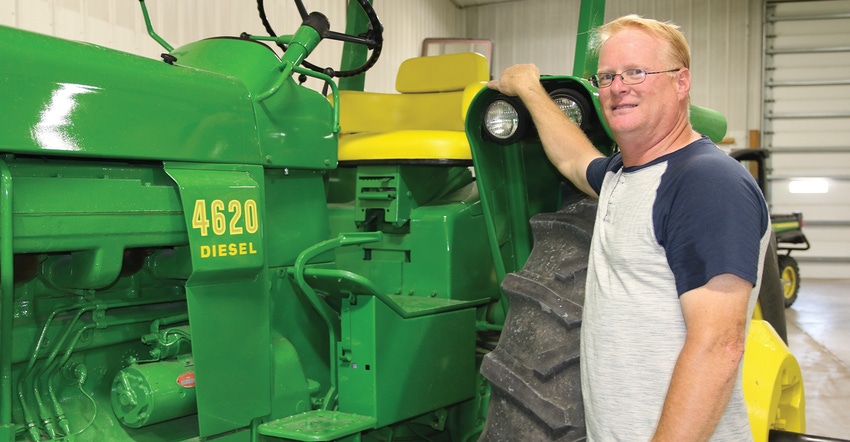
At the end of June, Farm Progress Show host farmer Bill Voorhees reported farms as close as 20 miles north of Progress City, near Decatur, Ill., were unplanted, experienced ponding or had low emergence. His 60 acres on the show grounds and the rest of his farmland in Macon and DeWitt counties, however, were at the eye of a garden spot.
“I think we’re looking for a good year with our being in the garden spot,” Voorhees says. “I imagine other guys are probably worried to death, and I would, too.” He notes that while an early frost hasn’t happened for a long time in his area, “that could be a setup for one this year.”
He’s also mindful of wet conditions that occur at the end of summer.
“We normally put fungicide on every year. We do our corn and beans. The margin is probably going to be there to justify using it. It’s just the timing of harvest might be an issue, because fungicide usually extends the life of the plant and that’s where your yield comes from. But as we get later, that’s where drydown is more wet than we’d like it to be,” Voorhees says, adding that he’ll only be applying fungicide to soybeans this year.
A Sukup mixed-flow dryer he bought last year will come in handy for a late and wet harvest, he says.
Equipment saves the day
Voorhees became a host farmer for the Farm Progress Show partly because he wanted to talk with vendors more and get insights on new technology early.
“We use everything,” he says. “Climate FieldView for tracking planting and harvest data, and then there’s John Deere’s guidance system. Plus, we use some Trimble stuff.” He says that since technology changes so quickly, he relies on connections made at the show to help keep him up to speed.
“Being an early adopter can be a lot of work sometimes,” Voorhees says.
This spring, the field cultivator he owns never left the shop. Instead, he hitched up two vertical-tillage implements lent to him by manufacturers to fight weed pressure: one from John Deere and another from Great Plains.
“We were comparing the two, and we’re kind of leaning towards the John Deere because it takes out more weeds. They’re not quite built the same,” he says, adding he tried a Horsch Joker last year and found his soils were “too mucky for it.”
He also got suspended cabs for a new John Deere planter and new MT700 Challenger. The suspension helps him get from field to field on his track-propelled equipment — “without feeling like you��’re driving a bulldozer.”
“We had good luck with both, and they have their pluses and minuses, but I think we’re going to try to keep both,” Voorhees says.
Rain delays
With planting delayed by at least a month, Voorhees says the tiling demonstration area he owns north of the show grounds is nonetheless going to be ready for harvest shortly before the show.
“Normally, we plant 94-day corn for the show field. This year we planted 85-day corn,” he says.
Voorhees says his field north of Progress City is the first he plants every other year when the show comes through. “It gets special treatment, as you can imagine,” he says. Voorhees has owned the land through the past three shows.
For most of his acreage outside of the show grounds, he was delayed by rain until June 1. He was done planting by June 5, thanks to a large, high-speed planter from John Deere.
Voorhees says 85% of his farms are tile-drained, which helped him get into the fields a day earlier and, moreover, avoid ponding.
“We planted 1,000 acres of beans in two days,” he says, noting his combines, tillage tractors, planters and grain carts have tracks installed on them. “It was wet; we shouldn’t have been out there, but we were. We didn’t get stuck, but the compaction is still there.”
Voorhees says by late June, they’d knifed in their sidedress fertilizer applications, which helped aerate the soil. He bought the equipment from a vendor at FPS, Countryside Implements.
“Our ground, if you work it too wet, it turns to concrete. Then there’s the problem of emergence,” he says. “Emergence was actually good this year, and I don’t know how we’re getting the crop we’ve got. The constant moisture saved our butts really.”
About the Author(s)
You May Also Like




